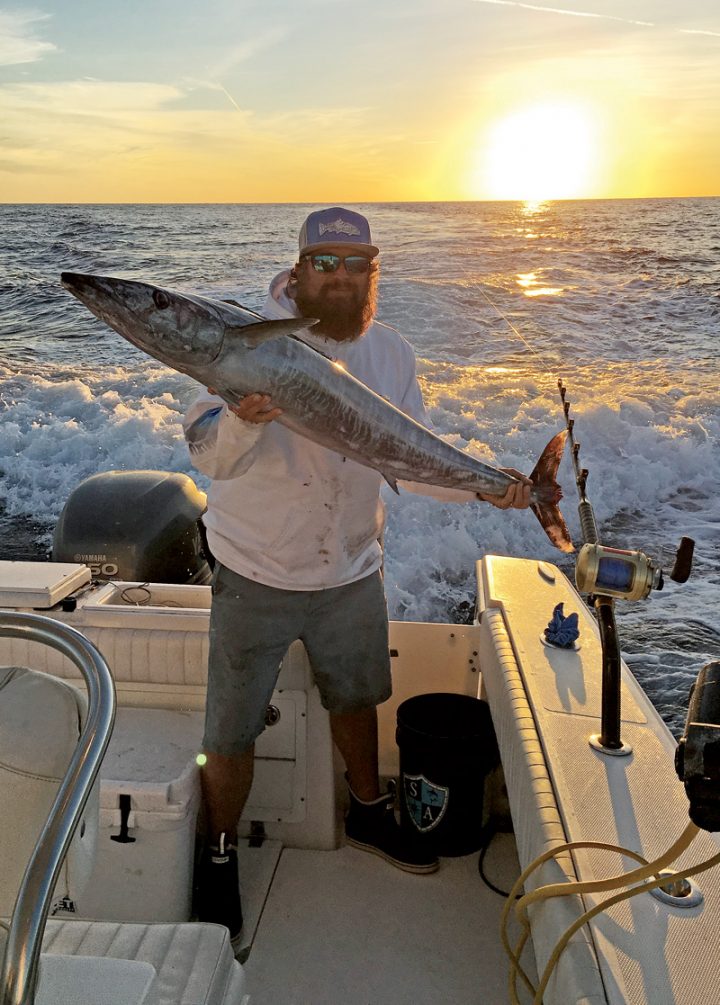
The golf courses are packed and the roads are jammed with cars sporting license plates from the great white north and to top it off, there’s over an hour wait at every nice restaurant in Broward county. It’s winter and we all have to deal with the inflated population that tourist season brings, but for me and other avid anglers, this means one thing. It’s wahoo season baby! Having fished the waters of South Florida and the Keys my entire life, I look forward to this time of year as wahoo have always been my favorite fish to target. There’s no other fish in the ocean that gets my heart pumping like wahoo. When the violent strike of a wahoo occurs, there’s no mistaking it. True to its name, those intimidating runs are often followed by a loud “wahoo” scream from the angler.
With numerous wrecks and artificial reefs between Port Everglades and Hillsboro Inlet, Broward county has a true wahoo fishery just off the beach. From wrecks as shallow as Hog Heaven in 65 feet to the 260 foot deep Bill Boyd, you can find wahoo in any depth as long as the tides are right. Primarily, I like to fish the outgoing tide, although you can also find them on the incoming tide. I’ve often heard that as long as the water is moving, wahoo can be found. As most of you already know, the moon plays an enormous role in many fisheries, but none more important than wahoo. Fishing the three to four days before and after a full or new moon will greatly increase your chances of screaming WAHOO! Because of the stronger than normal tides associated with these moon phases, bait fish will often hold up on structure, ledges and rips enticing wahoo to wait in the wings for an easy meal.

Once on the troll, we never really have a set pattern and our spread allows us to be tangle free as we search for fish. While zig zagging over structure, bottom changes, rips and color changes, we look for signs of life and watch the bottom machine like a hawk. When a strike occurs, we mark the spot immediately by using the MOB feature and use those marks for future reference. Occasionally, we pull back on the throttle over favorable spots and let the baits sink down, then jump back on plane to yank those baits back up. In my opinion, if there are wahoo around that are not feeding, they can’t resist taking a shot at an annoying and fast moving colorful lure. That said, I like to base my lure colors on light conditions. When fishing before sunrise, my entire spread will consist of dark colored lures. As the sun comes up, I will change a few out for brighter colors.
Once the strike occurs, don’t touch the throttles, as wahoo are often found in packs. It is not uncommon for two or three reels to start screaming at once. If your long baits are hit first, don’t clear any lines until necessary. We leave the rods in the holders and take full advantage of the two speed gears on the Shimano reels, slowly bringing the fish in between last ditch runs. Once the weight reaches the boat, it’s always good to have a dedicated leader man to pull on the 30 foot shock leader to bring the wahoo to within gaffing range. Fortunately, my 29 foot Southport has dual doors on the transom so many of our wahoo are boated right through the doors. Before you boat your wahoo, it is always good to have plan in place before it hits the deck with its razor sharp teeth. Always have someone ready with a fish box open or keep everyone out of the way until it settles down. Flip flops are never a good idea around the mouth of a wahoo and can result in a fun day on the water turning into a day at the emergency room.
After all the high fives and hooting and hollering have settled down and your spread is back in the water, I like to add a few bucket fulls of clean saltwater to the fish box. This creates a nice salty slush, ensuring the flavor of the fish. When cleaning wahoo back at the dock, I never use fresh water. I grab the salt slush from the fish box and use that when cleaning and cutting the wahoo into steaks. What we will not be eating with a couple of days, we freeze in ziplock bags with a little of that saltwater, to ensure the fish retains its flavor. Honestly, it is very hard to tell the difference between fresh and frozen when you take this extra step. My friend and fellow fisherman, Jeff Hald, turned me on to Bahamian Sashimi wahoo a couple years ago. Since learning that preparation, I can’t seem to keep fresh wahoo in the house. Between my wife and kids, the plate barely makes it out of the kitchen before it is quickly devoured. It’s a simple, but delicious recipe that calls for thinly slicing the wahoo into medallion sized pieces and squeezing fresh lemon and lime juice on the fish and letting it marinate in the fridge for 30 min or so. Once chilled, serve with soy and or wasabi.
~ Chris Brito

